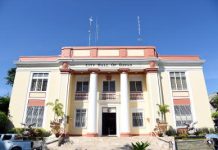Using chemical elements found in coffee and cacao beans, Filipino scientists are working to profile the beans’ unique geographical identity with the aim of authenticating their origins.
Ang mahalagaha na bentahe ng mga kape na ito bukod sa kanilang quality o sarap ay yung hindi natin mahihiwalay ang identity nila kung saan galing, galing ba siya sa Mt. Apo? o galing sa Balutakay? (The important selling point of the coffee aside from its quality or taste is we cannot separate its identity from the place where it originated. Whether it came from Mt. Apo or from Balutakay),” says Dr. Emmanuel Garcia project lead of the Food Authenticity and Traceability Project.
The research is based on the principle of stable isotopes and multi-elemental profiles which represent the physical, chemical, and biological processes in organisms and ecosystems.
According to Garcia, in analyzing the beans in terms of the elements like oxygen, hydrogen, and carbon, each region differs in the amount and presence of certain elements that uniqueness acts as a fingerprint for each geographical region.
He cited for example that cacao samples from Region XI have higher Potassium content than those from Region IX, and Region XI has higher calcium content than negligible content in the beans coming from Region IX.
“Syempre magkakaiba ang composition ng lupa sa ibang lugar magkakaiba ang characteristics ng lupa, magkaiba ang tubig, yung water chemistry, yung weather conditions na makakaapekto sa paraan ng pagsipsip ng halaman doon sa mga nutrients ( Surely the composition of the soil is different from other places, the characteristics of the soil is different, the water, the water chemistry, the weather conditions that will affect how the plants absorb the nutrients),” Garcia said.
“The elements and isotopes found in the beans are practically unique in the particular place because of the presence of elements and the conditions that let the plants absorb these elements,” Garcia added.
He said one aim of the study is to stop mislabeling coffee beans, as coffee and cacao beans from Davao Region are highly valued and known for their quality. Coffee beans from Mindanao particularly Davao have been dominating in the Philippine Coffee Quality Competitions.
Garcia said that winning coffee beans fetch higher prices in coffee auctions as these quality beans have heightened demand. This would lead some unscrupulous traders to mislabel their coffee beans as coming from Mindanao or Davao.
He said without a scientific process that could prove the authenticity of the beans some beans would be passed off as coming from another region well known for their quality beans.
Aside from mislabeling the study could be used for food safety purposes and also to determine the impact of climate change.
The food authenticity and traceability research project is funded by the Department of Science and Technology- Philippine Council for Industry, Energy and Emerging Technology Research and Development (DOST-PCIEERD) and undertaken by the De La Salle Food and Water Institute- Philippine Nuclear Research Institute.
The two-year project is now in its second and final year and according to Garcia many coffee and cacao producers are submitting their samples to the research team.
“With the help of the different government agencies and local government units there has been a heightened interest in the project, we have received many beans and many samples are forthcoming,” Garcia said. (RGA/PIA11)






